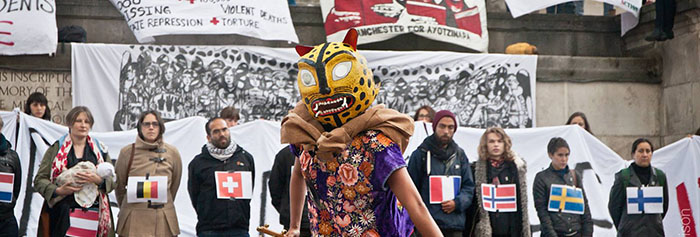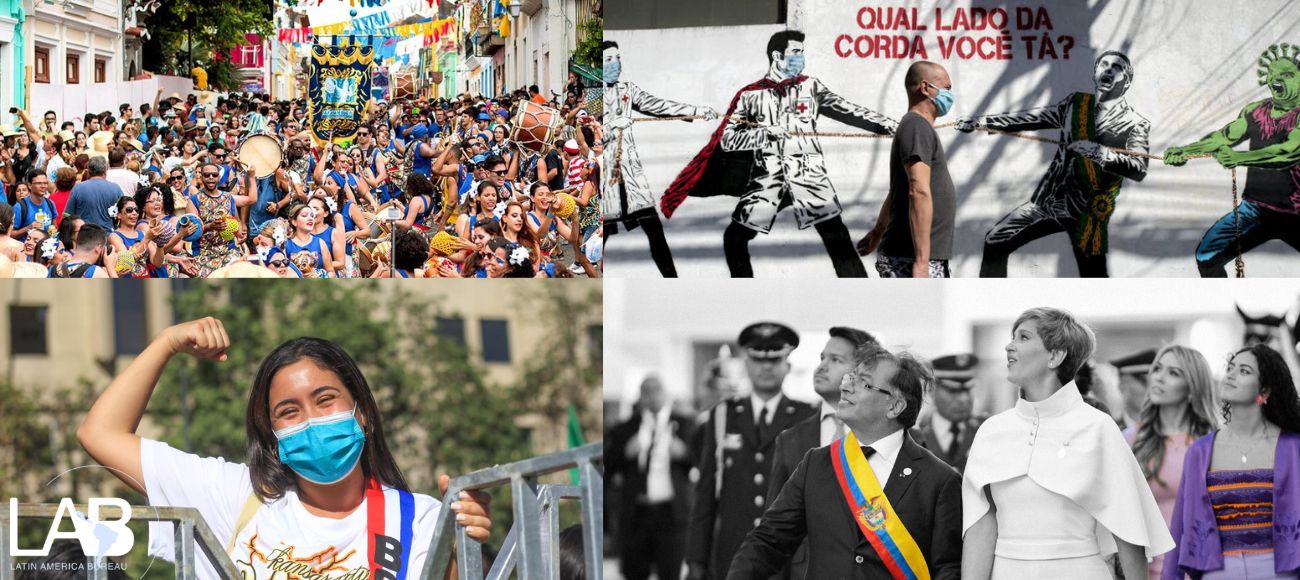Paul Krugman, recipient of the 2008 Nobel Prize in Economics, points out that Mexicans have grown tired of waiting for the “Mexican Miracle”. Such a long, unfair wait, and so many dashed hopes are like a time-bomb ready to explode.
A new breed of Mexican has appeared in social media platforms like Facebook and Twitter. These spaces are used to protest at what are perceived as the country’s most outrageous injustices. Today’s young Mexicans are far better informed, more engaged and angrier than ever before. Young people march shoulder to shoulder down the capital city’s Paseo de la Reforma, and the main streets of our other major cities, to protest against government corruption, graft, looting, injustice, bureaucracy, and – recently and specifically – against the disappearance of 43 trainee teachers from Ayotzinapa last September 26.
Since then we haven’t stopped questioning what happened to them, and the lack of response means our anger is now at boiling point. Needless to say, the government hopes that time will erase all vestiges of this and other recent massacres that have appalled me and my fellow citizens.
 Members of the ‘Eurocaravan 43 Ayotzinapa’ in London’s Trafalgar Square in May 2015, to draw attention to the fate of the disappeared trainee teachers.
Members of the ‘Eurocaravan 43 Ayotzinapa’ in London’s Trafalgar Square in May 2015, to draw attention to the fate of the disappeared trainee teachers.
Ayotzinapa’s Teachers’ College is located in Guerrero, one of Mexico’s poorest and most overlooked states, only a short distance from Acapulco, a paradise for tourists and also for drugs. Aeroplanes from all over the world land at the city´s international airport because of the port’s celebrity status as a playground for the world’s idle rich. But today, Acapulco is also a centre of degradation and decay, thanks to the governors who have industriously ruined it over the years ever since the rule of former president Miguel Alemán, seventy years ago.
Two hundred kilometers away, in the same state, Ayotzinapa looks like a pigsty, a grim place where students sleep on broken-down cardboard boxes and -if they are lucky- eat beans and tortillas for breakfast, lunch and supper. Their homes are shacks and their classrooms lack every basic necessity: desks, blackboards, electricity, even a cement floor.
Independent journalism silenced
Take the case of Carmen Aristegui, a journalist forced off the airways by close associates of Mexico’s ruling party. Once again the Revolutionary Institutional Party (PRI) is linked to this shocking crime. Aristegui had six and a half million followers on radio and television. Her morning programme
Primera Emisión (First Broadcast) had the largest audience in Mexico. Her newscast, unique in being truly critical of Mexican politics, set the country’s agenda every morning. During her programme, she aired criticisms and revealed scandals that political powermongers and the PRI didn’t want exposed.
To mention a few examples, we could recall:
- the case of a 73-year-old indigenous shepherd, Ernestina Ascencio, from the village of Tetlazinga, Veracruz, who died on February 6 2007, following a violent gang rape by soldiers;
- the MONEX scandal during the presidential campaign of 2012, when credit cards were handed out to voters to go shopping in a local supermarket;
- the Televisa caravan of cocaine to Nicaragua, also uncovered by Carmen Aristegui, who discovered forty drug convoys to Nicaragua;
- the extensive coverage she gave to the massacre of 22 people in San Pedro Limón,Tlatlaya, a village in the State of Mexico on June 30, 2014;
- the 43 students in Ayotzinapa in September 2014;
- the massacre of 16 civilians in Apatzingán only recently uncovered although it took place on January 16, 2015.
In addition to this litany of crimes against humanity, Carmen Aristegui’s MVS radio programme constantly monitored the ongoing human rights violations that have significantly increased during Enrique Peña Nieto’s presidency.
The abrupt cancellation of her programme has dealt a blow to one of our most nationally and internationally known journalists. The impact of her dismissal featured in the pages of such important publications as the
New York Times and
Time magazine, which had recently included her in their list of the 25 most influential Latinos in the USA.
In the cruel life of a ‘narco-state’ such as Mexico, those who are worst hurt are always the poor and defenceless, whose human rights are systematically violated. The one space where the voices of these groups could obtain a hearing was that aired by Carmen Aristegui, and it has now been silenced. This abusive and unjust act whose purpose has been to frighten into silence those who criticize the government and its current president, has only served to further limit the rule of law in Mexico.
If I were to be asked now, in 2015, what worries me most about the terrible situation in Mexico, I would say that, in addition to the “Colombianization” of my country; it is the alarming lack of education. Former President Felipe Calderón’s war against drugs has poisoned the life of the country, and government corruption has reigned over the last six “sexenios”, (6-year presidential terms of office).It now permeates all levels of government, from the president of the republic to the most minor public employee.
Education a national disgrace
This national disgrace is intimately linked to the state of education in Mexico. The 43 students wanted to be teachers, their only opportunity to get ahead in life was their school, located in a conflictive and abandoned state left by the government to fend for itself. The same government accused these students of belonging to a guerrilla movement, like those teachers in the 1970s, driven to desperation by the indifference of the Mexican regime.
The people of Guerrero have long considered these students to be their heroes. According to them, the recently abducted students also shared a deep social awareness: they helped most during natural disasters (earthquakes and floods) and other times of need, and were deeply involved in the life of their community.
Mexico’s chronic unemployment is also a factor influencing the number of children able to attend school. If the family is poor, as most are, all family members have to work. The youngest exchange what toys they have for tools, often working more than 12 hours a day in precarious conditions. This is typical of the brick-makers of Guerrero state, where kids are unable to attend school if they want to eat, and in order to eat they have to work.
On its website, UNICEF Mexico states: “the reality of great disparities and social exclusion in the country is still reflected by unequal levels of primary school education, with important gaps in preschool but especially in secondary and high school, where a significant proportion of the poor sectors –or those who are most vulnerable– do not attend school and many of those who do are unable to complete their studies.”
A child who doesn’t go to school has few paths for development and can often be victimized because Mexico’s government doesn’t take care of its citizens, many of whom end up being victims of all kinds of abuse. In several states in the north of Mexico, when children are asked what they want to be when they grow up, they answer: “a drug dealer”, like their father. Instead of a pen, the youngster chooses a machine gun as his tool.
An educated country doesn’t eliminate or ‘disappear’ its citizens as occurred in the massacres at Tlatlaya and Apatzingán. An educated country denounces the disappearance of 43 students and permits negotiation with the authorities, rather than employing violent means to ‘resolve’ differences as has repeatedly occurred in Mexico since the student massacre of October 2, 1968.
Carmen Aristegui was right when on May 1st her article in Reforma assured us:“Tlatlaya, Ayotzinapa and Apatzingán represent three cases that have put the Mexican government to the test.”
Elena Poniatowska is one of Mexico’s leading writers. She has spoken out on human rights in her country since the October 1968 massacre of students and the 1985 earthquake in Mexico City. This is an edited version of a recent speech she gave in Chicago. Her latest book to appear in English is
Leonora, the imagined life of the surrealist painter Leonora Carrington, who lived for many years in Mexico. Translated by Amanda Hopkinson, it is published by Serpent’s Tail.
 Members of the ‘Eurocaravan 43 Ayotzinapa’ in London’s Trafalgar Square in May 2015, to draw attention to the fate of the disappeared trainee teachers.
Ayotzinapa’s Teachers’ College is located in Guerrero, one of Mexico’s poorest and most overlooked states, only a short distance from Acapulco, a paradise for tourists and also for drugs. Aeroplanes from all over the world land at the city´s international airport because of the port’s celebrity status as a playground for the world’s idle rich. But today, Acapulco is also a centre of degradation and decay, thanks to the governors who have industriously ruined it over the years ever since the rule of former president Miguel Alemán, seventy years ago.
Two hundred kilometers away, in the same state, Ayotzinapa looks like a pigsty, a grim place where students sleep on broken-down cardboard boxes and -if they are lucky- eat beans and tortillas for breakfast, lunch and supper. Their homes are shacks and their classrooms lack every basic necessity: desks, blackboards, electricity, even a cement floor.
Members of the ‘Eurocaravan 43 Ayotzinapa’ in London’s Trafalgar Square in May 2015, to draw attention to the fate of the disappeared trainee teachers.
Ayotzinapa’s Teachers’ College is located in Guerrero, one of Mexico’s poorest and most overlooked states, only a short distance from Acapulco, a paradise for tourists and also for drugs. Aeroplanes from all over the world land at the city´s international airport because of the port’s celebrity status as a playground for the world’s idle rich. But today, Acapulco is also a centre of degradation and decay, thanks to the governors who have industriously ruined it over the years ever since the rule of former president Miguel Alemán, seventy years ago.
Two hundred kilometers away, in the same state, Ayotzinapa looks like a pigsty, a grim place where students sleep on broken-down cardboard boxes and -if they are lucky- eat beans and tortillas for breakfast, lunch and supper. Their homes are shacks and their classrooms lack every basic necessity: desks, blackboards, electricity, even a cement floor.


